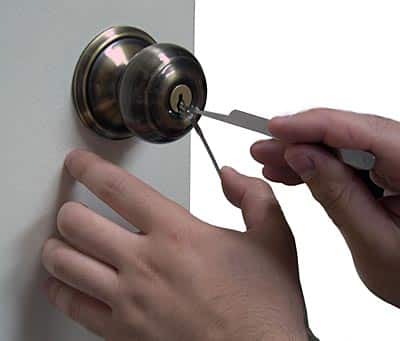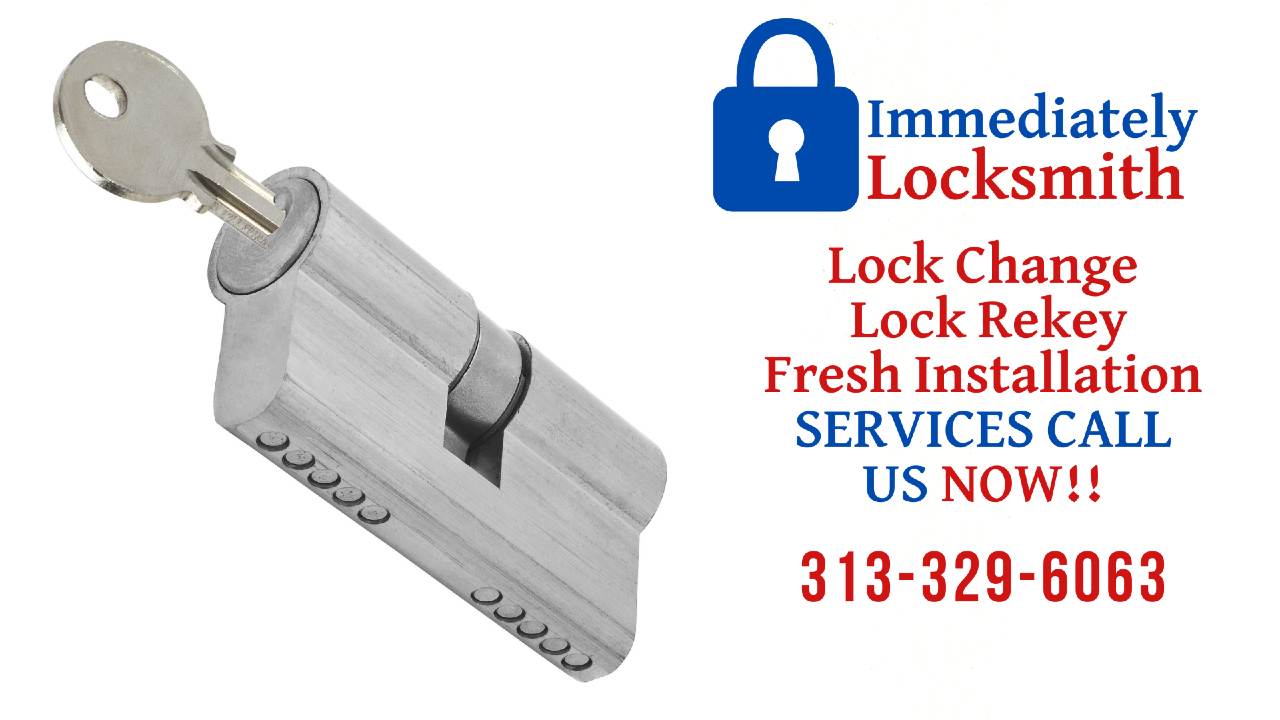
Locksmiths’ specialized keys such as bump keys that prove to be a risk if they get into the wrong hands. A thief would use a mallet or screwdriver to “Lock Bumping” the lock after inserting a bump key into it. As the burglar taps the bump key, the pins within the lock align. Then, the thief can open the door with just a small twist of the key. Understanding lock bumping, its workings, history, and ways to defend against it can help security professionals and homeowners protect their properties.
Lock Bumping History
The practice of bumped lock has been around since the 1920s. It was a period when locksmiths were looking for ways to unlock locks quickly and safely. Experts have utilized this useful method to fix their locks. There are concerns about this technique, including burglary. More locksmiths started to take an interest in lock bumping in the 1970s.
What is Lock Bumping?
A common method of breaking into homes is “lock bumping,”. This method takes advantage of the simplicity of pin tumbler locks. The cylindrical body of these locks has a number of pin stacks, a stopper, and a spring that secures each pin. The job of the key is to lift the pin stacks to align with the line. It allows the plug to rotate and unlock the door. It is a technique that is effective on traditional and old locks. The best way is to use protective gear to improve the security of locks.

Ways used by Thieves to attempt Lock Bumping
There are different ways that thieves attempt lock bumping. Some of the ways that are usually used are:
What is a bump Key?
In order to gain access to a door, the intruder uses a standardized bump key that, in general terms, can be used with different tumbler locks. These keys are built to have all the cuts that are required to open a lock. This general principle means that one bump key could work on a number of locks, prompting a burglar to pick locks. It is a fast method that usually leaves no clue about burglary.
Applying Minimal Force for Stealth
Usually, burglars do not have to use a lot of force to bump keys. Instead of using a hard object like a hammer, a burglar strikes a rubber hammer with his palm. This reduces the probability of a disturbance and makes it impossible for neighbors to notice any movement. By using minimal force, intruders can still transfer enough energy through the bump key to jostle the pins into position and unlock the door. This method enables them to work discreetly, especially during the night or in quiet areas.
Targeting Older or Low-Quality Locks
Burglars usually target cheap locks because they are easy to pick. A typical lock does not have anti-bumping designs incorporated in it; hence, a bump key is able to pick it up easily. Likewise, cheap locks have simple pin designs combined in their locks or are poorly engineered. Such locks typically have the same mass and structure; hence, when hit on a certain point, the response of these locks is almost predictable. Burglars take advantage of this weakness, knowing that many homeowners have never had the chance to upgrade their locks.
Using Modified Tools
The application of lock bumping can be enhanced when a thief possesses modified tools for a certain lock. This includes cutting the bumps or making unique shapes of the bump keys. These keys are specifically used for certain locks, making the ‘tool’ more effective. These unique cuts ensure that the knobs are cut in a way where the holes from the pieces are perfectly aligned. It increases the chances of getting through the lock easily.
Disguising Their Actions
Thieves usually disguise their actions to reduce suspicion when attempting lock bumping. They adopt the appearance of a legitimate locksmith, maintenance worker, or delivery personnel, blending into the environment. They are able to evade neighbors and cameras by taking this path. Thieves may sometimes target homes at odd hours when nobody is present at home.
5 Ways to Prevent Lock Bumping
Preventing lock bumping is important to protect property or homes from any kind of unauthorized entry. There are five effective ways to safeguard against lock bumping:

Using Bump Resistant Locks
Using a bump-resistant, upgrading to a high-security lock is one of the best ways to protect your home against the threat of lock-bumping attacks. With these locks, the pin structure includes specialized shapes such as spool and mushroom-shaped pins. These types of pins interrupt the energy transfer using a bumping technique. Some high-security models feature sidebars and additional locking mechanisms to prevent unauthorized entry.
Using Smart Locks
The use of electronic locks, often known as smart locks, is a reliable defense against lock bumping. The conventional pin-and-tumbler method is not used by these locks. As they rely on digital technology like keypads, fingerprint scanners, or smartphone applications, they are impervious to bumping tactics.. Smart locks offer the added benefit of enhanced control and convenience.
Many models allow for remote operation and monitoring, so homeowners can lock or unlock doors via smartphone apps. They are able to receive notifications of entry and even grant temporary access to guests. By bypassing mechanical pins altogether, smart and electronic locks significantly reduce the risk of unauthorized access.
Installation of Anti Bump Devices
The best way to increase the security of your property is to install anti-bumped devices. It is a way that helps to increase the security of existing locks. There is no need for a full replacement. These devices can be added to standard pin tumbler locks to make them resistant to bumping techniques.
Some common anti-bumping upgrades include adding “bump-proof” pins or using special locking mechanisms like sidebars. Some of the locksmiths can help you to improve the protective features of the locks. They help you to make them secure against the entry techniques. It is a kind of option that helps you to get an affordable and efficient way to improve the lock security.
Use Door Reinforcement Hardware
Using door reinforcement hardware is a valuable step in preventing lock bumping and enhancing security. Reinforcement hardware includes reinforced strike plates and heavy-duty door frames. A reinforced strike plate strengthens the area around the lock, preventing the door from being forced open. Installing a solid core door and adding a second deadbolt further strengthens the entry. These measures don’t directly prevent bumping, but they create additional barriers for the thieves.
Installation of Home Security System
The best way to increase security is to install a home security system. It is an excellent way that can be used to deter the intruders. It is the way that helps to prevent the lock bypass techniques and provide an extra layer of security. Motion Detectors, surveillance cameras and alarms systems can notify you and law enforcement. Having a security camera can deter the burglars that makes it easier to take care of the burglary.
Similarly, the systems that include windows sensors and doors can detect whenever an entry point is opened. An alarm is attached with the entry point that triggers the alarm. It helps to combine a robust lock system with a comprehensive security system. It is the way that helps to make sure to improve the overall security of the house.
FAQs
What does it mean to bump a lock?
Lock bumping is a low-effort way to open certain cheap commercial locks where a specially designed key, known as a bump key, is inserted quickly and with force repetitively. Certain locks’ pins may, due to the force jump above their shear line thereby allowing the thief access to the building.
How do I stop my lock from bumping?
Some inexpensive products are now available on the market to prevent lock bumping. For example, you could use a flip guard to hold the existing lock and deadbolt firmly in place even if a burglar tries to pick the lock.
What locks cannot be bumped?
A pick-proof lock has specialized keys and safety features that prevent lock picking and bumping. The best pick-resistant locks to buy are the Medeco3 Cam Lock, BiLock deadbolts, and the EVVA MCS locking system.
Conclusion
Bumping is an effective method for burglars to get past standard pin tumbler locks. Homeowners and property owners must be aware of the dangers of this method and how it operates in order to protect their places. There are several ways to make it less likely that someone would bump the lock. To make your property more secure, you should upgrade to locks that can withstand bumps and other impacts.
It is important to choose smart or electronic locks, install devices that prevent doors from being bumped. Add hardware to strengthen doors, and set up a whole home security system. By following these steps, you can safeguard your house from lock bumping and other security breaches, giving you and your family peace of mind.




